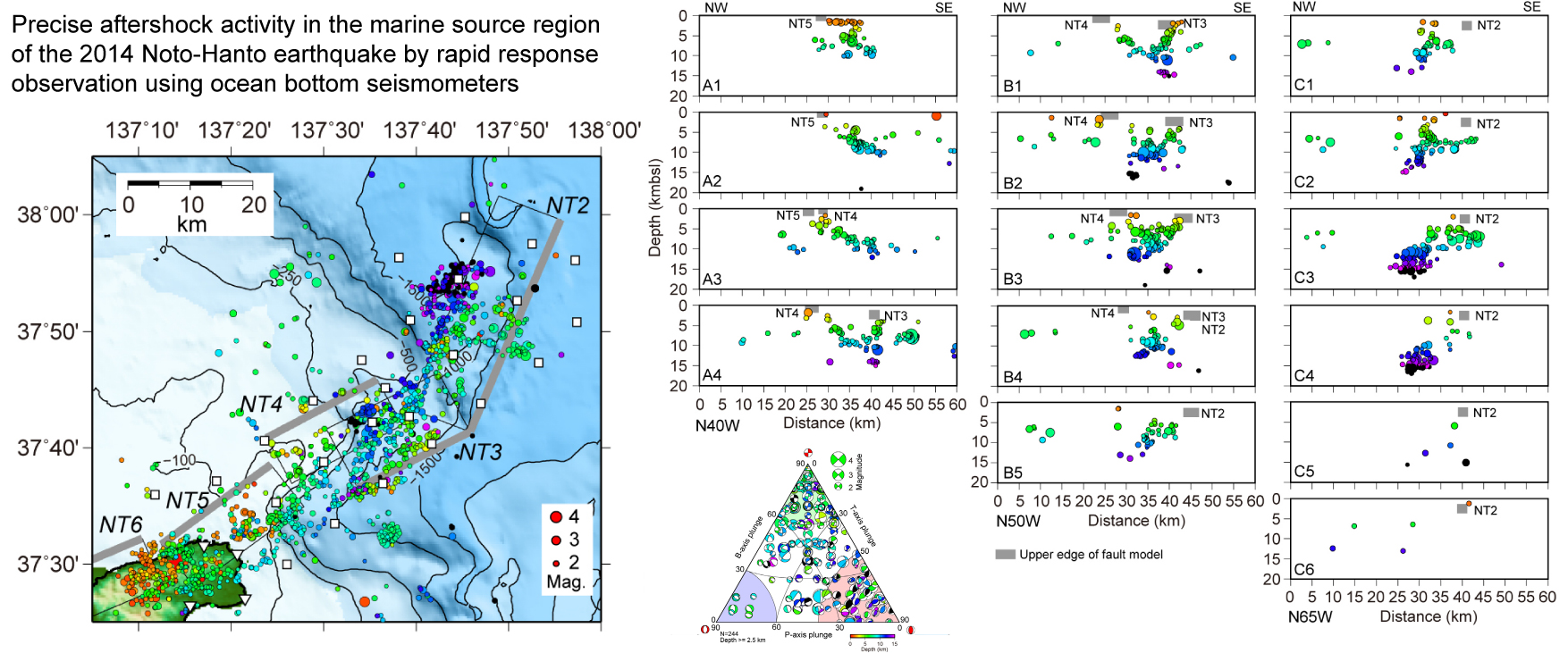Masanao Shinohara 1 , Ryota Hino 2 , Tsutomu Takahashi 3 , Koichiro Obana 3 , Shuichi Kodaira 3 ,
Ryosuke Azuma 2 , Tomoaki Yamada 1 , Takeshi Akuhara 1 , Yusuke Yamashita 4 , Eiji Kurashimo 1 , Yoshio
Murai 5 , Takehi lsse 1 , Kazuo Nakahigashi 6 , Hisatoshi Baba 7 , Yusaku Ohta 2 , Yoshihiro Ito 4 , Hiroshi
Yakiwara 8 , Yukihiro Nakatani 8 , Gou Fujie 2 , Toshinori Sato 9 , Hajime Shiobara 1 , Kimihiro Mochizuki 1 , Shin’ichi Sakai 10 and The R/V Hakuho-maru KH-24-JE01 and KH-24-JE02C shipboard science parties
1 Earthquake Research Institute, The University of Tokyo, 2 Graduate School of Science, Tohoku
University, 3 Japan Agency for Marine-Earth Science and Technology,
4 Disaster Prevention Research
Institute, Kyoto University, 5 Faculty of Science, Hokkaido University, 6 Department of Marine Resources
and Energy, Tokyo University of Marine Science and Technology, 7 Department of Marine and Earth
Science, Tokai University, 8 Graduate School of Science and Engineering, Kagoshima University,
9 Graduate School of Science, Chiba University, 10 Interfaculty Initiative in Information Studies, The University of Tokyo
Earth Planets Space 77, 43 (2025). https://doi.org/10.1186/s40623-025-02171-3
Received 29 October 2024, Accepted 14 March 2025, Published 03 April 2025 as Open Access
The 2024 Noto-Hanto earthquake with a magnitude of 7.6 occurred in the Noto Peninsula on
January 1, 2024. The mainshock had extending to the marine area. Therefore, we performed a
rapid response seafloor seismic observation in the source region and its vicinity. We deployed 34
free-fall pop-up type ocean bottom seismometers (OBSs) in January 2024, and recovered 26 short-
period OBSs after a month. Based on the event list by a land seismic network, we relocated the
hypocenters of the events by combination of the location programs using absolute travel times with
station corrections and the double-difference method. A velocity model was derived from the
velocity structure by the marine seismic survey. Focal mechanisms were estimated using the
polarities of the first P-wave arrivals. The aftershock depths mostly ranged from 0.2 km to 17 km.
The aftershock activity is confined in the upper crust. The aftershocks formed several dipping
planes corresponding to the multiple faults described in the offshore active fault model constructed
before the mainshock. This consistency indicates that the rupture at the mainshock propagated to
faults with different geometries. It is also shown that construction of fault model for regions with
active seismicity is useful. Although many focal mechanisms are the reverse fault type, numerous
aftershocks with a strike-slip fault focal mechanism also occurred. Most of the events involving both
reverse and strike-slip faults had P-axes perpendicular to the fault strike. This finding suggests that
the aftershock activity was affected by a northwest-southeast compressional stress.
Information about the hypocenter (origin time and position) and focal solutions determined in this
study are available at https://doi.org/10.5281/zenodo.13968365

Left: Final aftershock distribution after the double-difference method with bathymetry. Lower middle:
Triangle diagram of the distribution of focal mechanisms. Red, green and blue regions represent
pure thrust, pure strike-slip, and pure normal focal mechanisms, respectively. Right: Vertical cross
sections of the aftershocks in 15 regions. Each region has a width of 5 km. Thick grey bars in the
vertical sections indicate the projected upper edges of the modeled faults.

